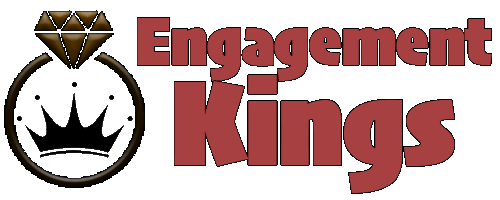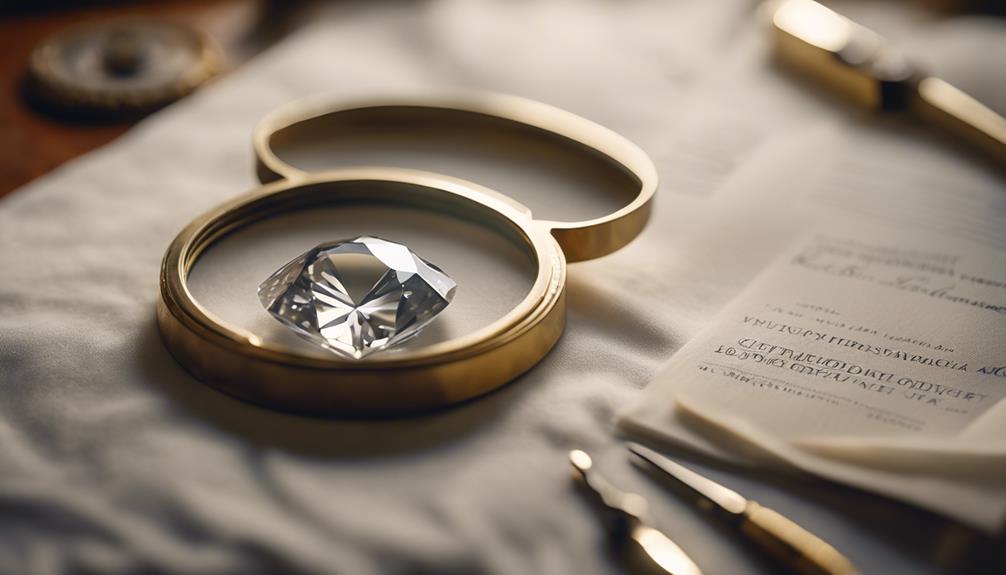When you want to guarantee the quality and authenticity of a diamond, you rely on a GIA certification. The Gemological Institute of America (GIA) provides unbiased assessments by evaluating diamonds based on the 4 Cs: carat, color, clarity, and cut, as well as additional details like polish, symmetry, and fluorescence. Each diamond is meticulously inspected by multiple graders to ascertain consistency and accuracy. Whether it’s a natural or lab-grown diamond, a GIA report offers a detailed grading certification with a unique number for online verification. Curious about how to verify this further or choosing a certified diamond? Keep going and you’ll uncover more.
GIA Grading Process
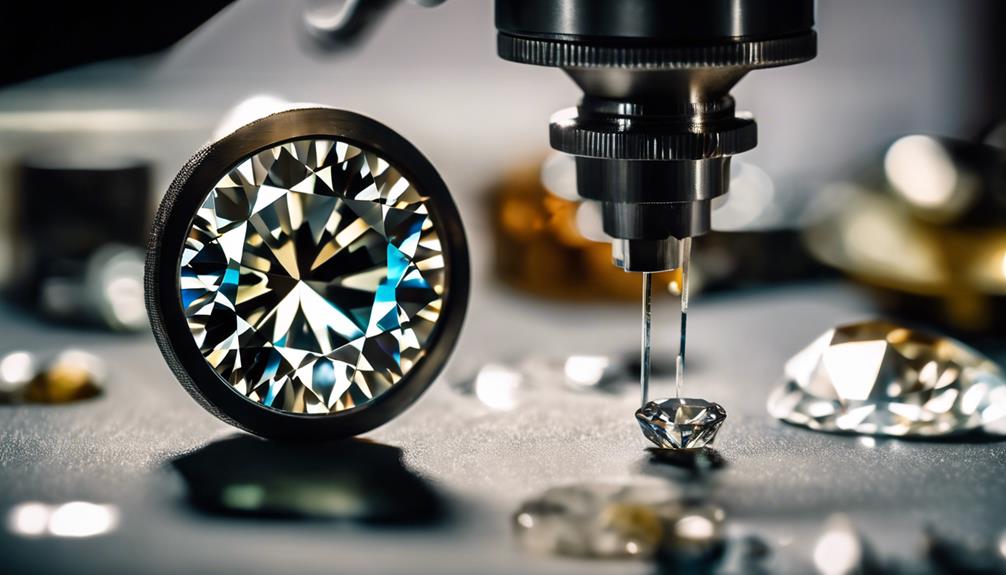
Understanding the GIA grading process is crucial for anyone looking to make an informed diamond purchase. The Gemological Institute of America (GIA) evaluates diamonds based on the 4 Cs: carat, color, clarity, and cut. These characteristics determine a diamond’s quality and value.
In addition to the 4 Cs, GIA includes details like polish, symmetry, fluorescence, shape, and proportions in their grading reports. They operate as an independent third-party laboratory, guaranteeing an unbiased and accurate assessment. To maintain objectivity, GIA graders assess diamonds anonymously. Multiple graders look at each diamond to verify consistency and accuracy in the grading process.
GIA’s rigorous grading process provides buyers with confidence, confirming they’re not overpaying and that the diamond meets the advertised quality. It’s significant to mention that GIA also applies the same stringent criteria to both natural and lab-grown diamonds. They specify the production method, such as Chemical Vapor Deposition (CVD) or High Pressure High Temperature (HPHT), in their reports.
Certified Diamonds Explained
When you’re shopping for diamonds, a GIA certification guarantees you’re getting a gemstone that’s been meticulously graded for quality and authenticity. This certification means the diamond has undergone a rigorous evaluation by multiple expert graders. You can trust that its characteristics, such as carat, color, clarity, and cut, are accurately represented.
GIA certified diamonds come with a detailed grading report. This report includes not just the 4 Cs but also information on polish, symmetry, fluorescence, shape, and proportions. Each diamond is assigned a unique number, allowing you to verify its details online. This transparency helps you make informed decisions and assures you’re not overpaying.
It’s important to understand that GIA certification isn’t just about natural diamonds. Lab-grown diamonds are also graded using the same stringent criteria. The report even specifies the production method, whether it’s Chemical Vapor Deposition (CVD) or High Pressure High Temperature (HPHT).
Certification Organizations Compared
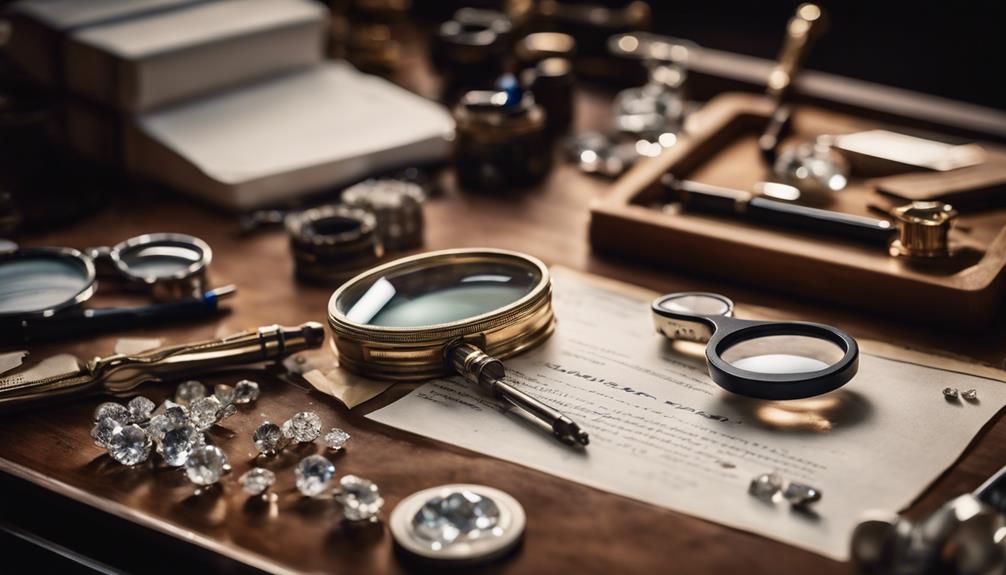
Among the various diamond grading entities, GIA stands out for its rigorous standards and reliable assessments, making it a preferred choice over others like AGS, IGI, EGL, GSI, and HRD. When you’re looking for a diamond, understanding the differences between these organizations is essential.
AGS is known for its strict grading and uses a scale from 0 to 10, similar to GIA’s high standards. However, GIA’s global recognition gives it an edge.
IGI, on the other hand, offers varying quality in its reports, and while it’s prevalent in the market, it doesn’t always match GIA’s consistency. EGL is often criticized for lenient grading, leading to potential discrepancies that can affect the diamond’s value.
HRD is more commonly used in Europe and, while reputable, may have slight differences from GIA’s grading system. GSI is another player, but its reliability can be inconsistent, making GIA the more dependable option.
Choosing a GIA-certified diamond means you’re getting a stone graded with one of the most trusted methods available. This guarantees you’re not overpaying and that your diamond meets the highest standards of quality and accuracy.
Top Online Retailers
For those seeking GIA certified diamonds, two top online retailers stand out: James Allen and Blue Nile.
James Allen offers an extensive selection of loose diamonds, many with GIA certification. You’ll appreciate their high-quality imagery, which lets you inspect diamonds closely before purchasing. They also offer a 30% discount on lab-grown diamonds, making them an excellent choice if you’re environmentally conscious or budget-focused.
Blue Nile, on the other hand, boasts one of the largest inventories of GIA graded diamonds. They’re known for competitive pricing and a 35% limited-time discount. You’ll find that Blue Nile emphasizes customer satisfaction and value, making it a reliable option for your diamond purchase.
Both retailers provide lifetime warranties, free shipping, and excellent customer service. They also have favorable return policies, ensuring you can buy with confidence.
Advanced inspection technology is available on both platforms, allowing you to closely examine diamonds’ features.
Buying Guidance
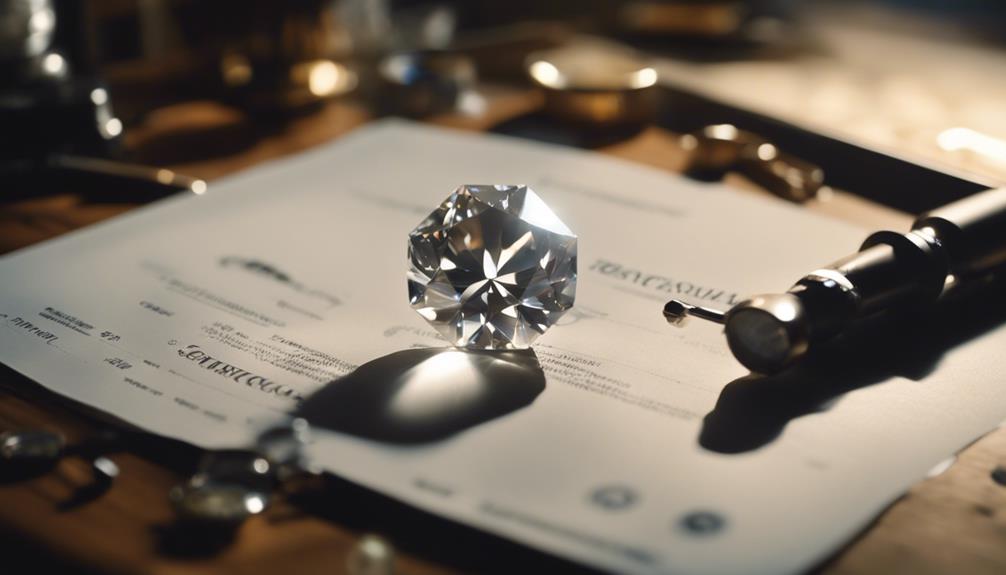
After selecting a reputable retailer, understanding the key factors in buying a GIA certified diamond guarantees you make a well-informed decision. Start by familiarizing yourself with the 4 Cs: carat, color, clarity, and cut. These characteristics greatly influence a diamond’s value and appearance.
Next, always verify the GIA certificate. Each diamond has a unique report number you can check online, ensuring the grading details are accurate. This helps you avoid overpaying and guarantees the diamond meets the advertised quality.
Pay attention to additional characteristics like polish, symmetry, fluorescence, and proportions. These elements, often overlooked, can affect the diamond’s brilliance and overall visual appeal.
When setting a budget, balance the 4 Cs according to your priorities. For example, if sparkle is your main concern, prioritize cut quality. If size matters more, you might compromise slightly on color or clarity without sacrificing overall beauty.
Lastly, ask for expert advice if needed. Retailers like James Allen and Blue Nile offer customer support and detailed imagery to aid your decision. By doing your research and utilizing available resources, you’ll confidently choose the perfect GIA certified diamond.
Conclusion
By understanding GIA certification, you’ll make smarter diamond purchases.
Trust that your diamond’s 4 Cs—carat, color, clarity, and cut—are accurately graded, whether it’s natural or lab-grown.
GIA’s rigorous process guarantees you’re getting genuine quality, helping you avoid overpaying.
So, plunge in confidently, knowing your investment is protected.
With this guide, you’re equipped to make informed, assured decisions when buying diamonds.
Happy shopping!
